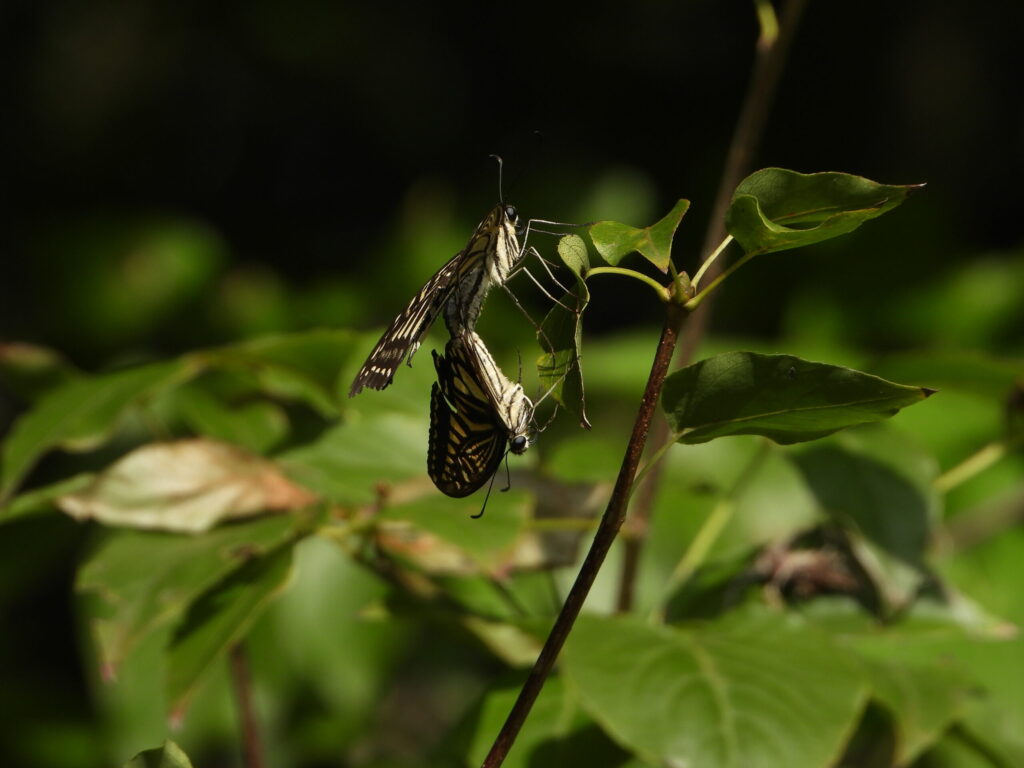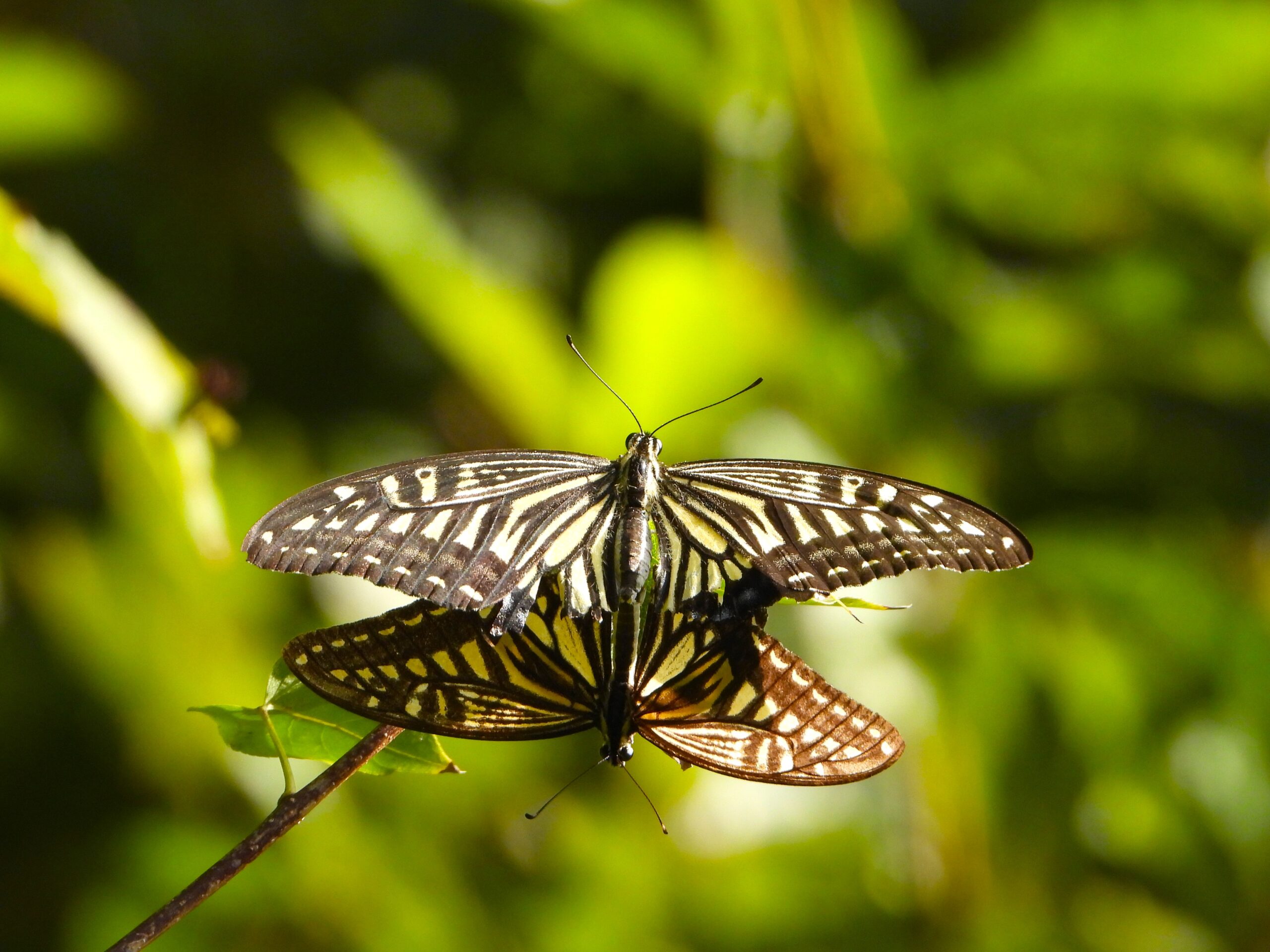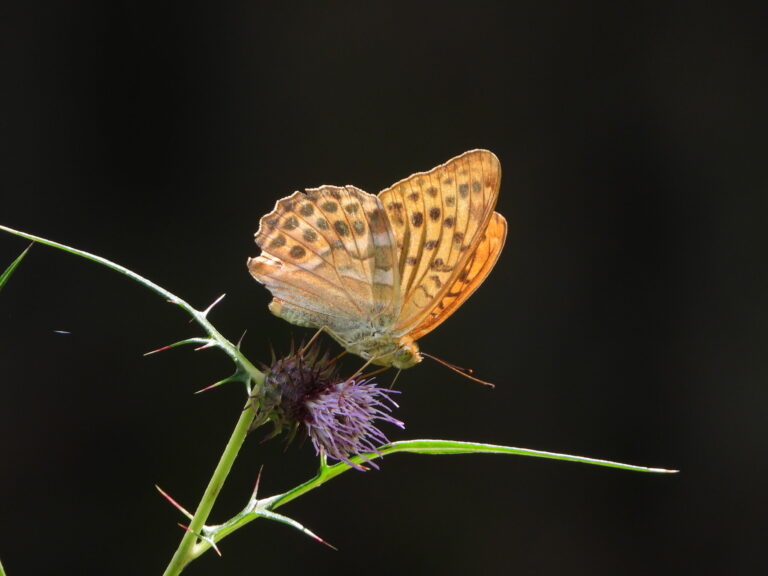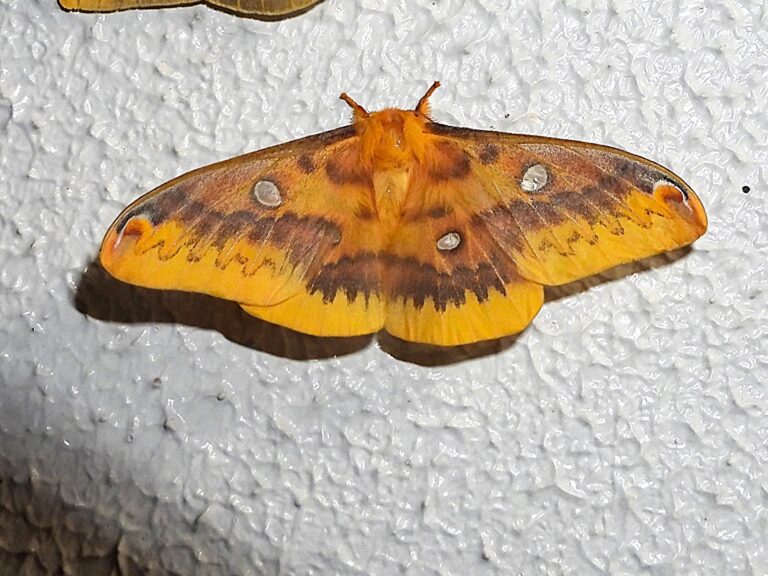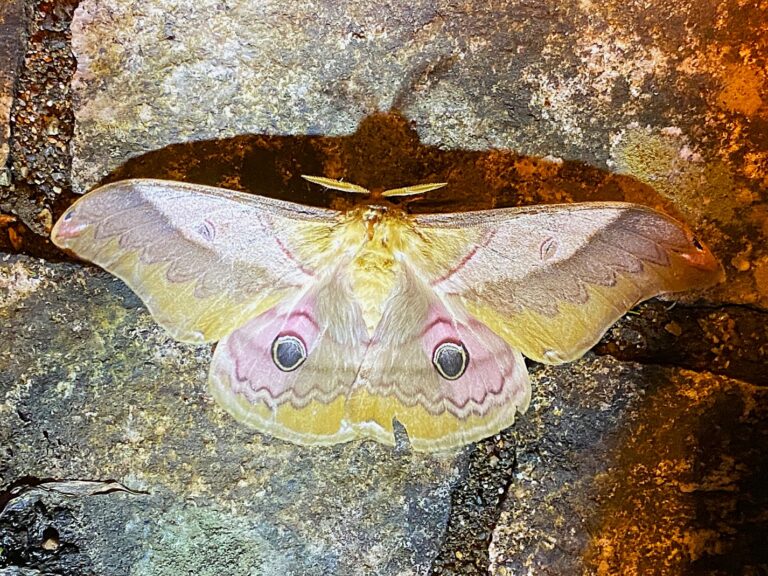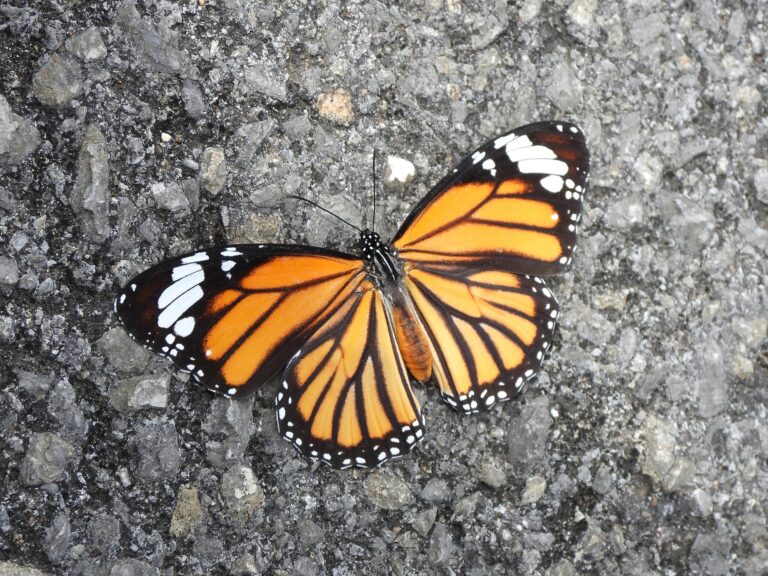Asian Swallowtail (Papilio xuthus) – Wildlife of Japan
Introduction
The Asian Swallowtail (Papilio xuthus Linnaeus, 1767) is among the most familiar butterflies in Japan and East Asia. Locally known as “Nami-ageha,” it appears from Hokkaido to the Ryukyu Islands. Because it adapts well to many environments, this species thrives in both nature and city gardens. You can easily see it fluttering gracefully from spring through autumn.
Appearance
This butterfly has a wingspan of about 90–110 mm. Its wings show a bright yellow base crossed by bold black bands, and the hindwings end with elegant tails. Below, the hindwings feature a row of orange spots and one blue patch near the tails—marks that clearly identify the species.
The caterpillar changes appearance dramatically as it grows. At first, it mimics bird droppings to avoid predators. Later, it becomes green with a fake eyespot on its thorax. When disturbed, it extends an orange, fork-shaped organ called an osmeterium, which gives off a citrus-like smell to scare enemies away.
Habitat & Distribution
The Asian Swallowtail lives throughout East Asia, including Japan, Korea, China, and Taiwan. In Japan, it occurs in nearly every prefecture except the highest mountains. It prefers sunny, open places—gardens, farms, riverbanks, and forest edges. Because citrus trees are widely planted across Japan, this butterfly has easily adapted to human landscapes and even breeds in urban areas.
Behavior
The species is active during the day, especially under bright sunlight. Males patrol their territories and sometimes chase intruders in the air. Adults visit a variety of flowers for nectar, such as azaleas, lantanas, clovers, and citrus blossoms. Thanks to their strong wings, they can travel long distances and occasionally fly between nearby islands.
Diet
Larvae feed mainly on citrus plants and other members of the Rutaceae family. Common host plants in Japan include Citrus unshiu (satsuma mandarin), Poncirus trifoliata (trifoliate orange), Zanthoxylum piperitum (Japanese pepper), and Citrus junos (yuzu). Adults drink nectar from many kinds of flowers. Because their host plants are so common, this butterfly remains abundant even in towns and cities.
Reproduction
Females lay eggs one by one on the leaves of host plants. Each egg hatches in about three to five days. The larvae grow for about two weeks, then pupate by attaching themselves to a branch or wall with silk. The pupa looks like a small twig. After 10–20 days, an adult emerges. In Japan, three to four generations appear every year, usually between April and October.
Conservation
This species is classified as “Least Concern” worldwide and in Japan. It has successfully adapted to human life and remains common throughout the country. Nevertheless, pesticide use in gardens and farmlands sometimes lowers local populations. Even so, the Asian Swallowtail continues to thrive and is one of the most widespread butterflies in East Asia.
Author’s Impression
The Asian Swallowtail is one of the butterflies that make people feel close to nature. In Japan, citrus trees often grow in gardens and schoolyards, and you can sometimes find the caterpillars feeding on their leaves. It’s truly a butterfly that lives side by side with humans. Whenever I see its yellow wings shining under the sunlight, I feel a little happier—it’s one of Japan’s most familiar insects.
